*This archive was originally written in Jan. 2021
Peter Chiarelli’s tenure with the Edmonton Oilers was incredibly tumultuous and his regime was one that fans won’t soon forget. In his nearly four years in Edmonton, he made countless head-scratching moves, including overpaying on numerous contracts, struggling to find capable wingers and goaltenders (other than one season of Cam Talbot), and seemingly trading high-quality assets for virtually insignificant returns.
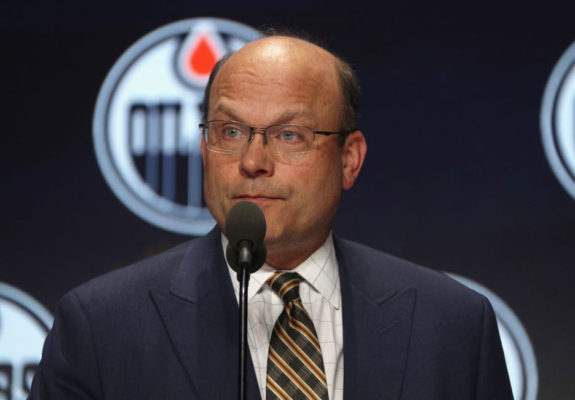
His claim to fame as Oilers general manager was signing Connor McDavid and Leon Draisaitl to long-term deals, although Draisaitl was already a part of the organization when he arrived and McDavid fell into his lap with the first overall pick. This article will rank some of the more surprising deals made by the former Boston Bruins and Oilers general manager, during his time in Edmonton.
10. Andrej Sekera Free Agency Signing
Upon Chiarelli’s arrival in Edmonton in 2015, it was apparent that the Oilers required a top-pairing defenseman, so he brought in Andrej Sekera at $5.5 million per season for six years. It is well known that Sekera’s contract did not provide the long-term outcome the Oilers were hoping for, however, it is only at #10 on the list due to his injuries.
Related: What Ever Happened to Rob Schremp?
Personally, I never agreed with the contract when it was originally signed, as Sekera had not displayed the ability to be an elite anchor on the back end, which was expected of him following the $33 million contract. Upon signing in Edmonton, Sekera was immediately deemed the savior of the Oiler defensive corps by many and major expectations were placed on his shoulders.
However, prior to the contract, he had double-digits in plus/minus and goals only once in his career and had achieved over 30 points in a season just once with the Carolina Hurricanes in 2013-14. Also, until that point in his career, Sekera had been one of the top two defensemen in time on the ice on his own team once in the aforementioned 2013-14 season with the Hurricanes where they missed the playoffs by 10 points.
However, there are many who hold the belief that Sekera could’ve recreated his Carolina successes with the Oilers consistently, in the absence of injuries, as he did have a significant impact on the 2016-17 team. Despite this 2016-17 season, Sekera struggled with the Oilers in his first season in 2015-16 (partly due to the struggles of the team as a whole) and in the seasons following 2016-17 due to injuries before he was finally bought out in 2019. (from ‘How the Andrej Sekera buyout changes the equation for Edmonton Oilers entering free agent season,’ Edmonton Journal, 07/01/2019)
This transaction is low on the list due to the potential that Sekera could have continued his strong play moving forward if he had remained healthy, although I believe the contract would still have been overvalued. Whichever side you agree with regarding this contract, the fact of the matter is that injuries are a part of the sport and, therefore, this signing ate up cap space and clearly did not go according to plan, which reflects directly on the general manager and front office.
9. The Drake Caggiula for Brandon Manning Trade
This is one of the trades that falls under the radar due to the multitude of intriguing transactions that occurred under this front office regime. The official trade by Chiarelli was Drake Caggiula and Jason Garrison for Brandon Manning and Robin Norell. The interesting part of this move is that there could be a separate spot on this list just for the contracts Chiarelli signed for Caggiula and Garrison.
You may also like:
- McDavid Shows Frustration With Oilers in Recent Loss
- NHL Rumors: Bruins, Oilers, Maple Leafs, Canucks
- 5 Takeaways From the Oilers’ 5-2 Victory Over the Senators
- Oilers Ride Strong First Period to 5-2 Win Over Senators
- Oilers’ Bouchard & Islanders’ Dobson: The Parallel Struggles of 2 Borderline Superstars
Caggiula was a player with some decent offensive ability in Edmonton who had the ability to play on multiple forward lines and even received some minutes on the Oilers’ power play. The major knock against him was that he often struggled in a variety of defensive situations. Therefore, when Chiarelli gave him a two-year contract at $1.5 million annually and signed a 34-year-old Garrison for $650,000 even though he primarily played in the minors the season prior, it was quite a surprise.
Even more surprising was when he made the decision to trade them to Chicago for a defenseman in Manning who legitimately has had trouble remaining at the NHL level, even with a two-year deal at $2.25 million per season and a career minor leaguer thus far in Norell in 2018.
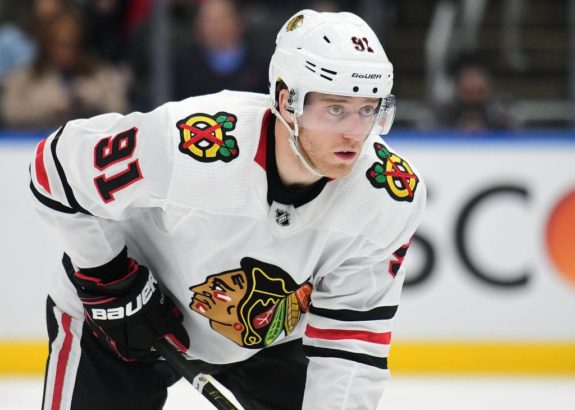
After the trade, Caggiula played at a similar level to his Edmonton days and even received some consistent playing time on Chicago’s first line, while Manning had a grand total of two points in 21 games over two years in Edmonton, although his contract has since expired.
8. Mikko Koskinen’s Contract
It may seem too early for Mikko Koskinen’s three-year, $13.5 million contract to be on this list, but his contract was that bad. This deal may deserve to be here just for the simple fact that it was officially signed one day prior to Chiarelli’s removal from the organization. Another interesting note is that Chiarelli should actually be commended for the original signing of Koskinen to a one-year deal at $2.5 million prior to the 2018-19 season, when he played well in 55 games.
However, at the time of the second deal, Koskinen was struggling mightily and the contract immediately looked egregious. (from ‘”Chiarelli is not a capable GM”: Twitter reacts to Edmonton Oilers big bet on Mikko Koskinen,’ Edmonton Journal, 01/22/2019) The inconsistent play, the failure in the playoffs, and his inability to cement himself as the consistent regular-season starter over an aging Mike Smith were all signs that Koskinen was not a $4.5 million goaltender.
The rumors continued to remain prevalent regarding who the Oilers should have acquired to shore up their goaltending situation, which directly reflected the perception that Koskinen was not the goaltender to lead the team. In his three seasons of the contract, he had one season with a goals-against average below three. After the contract expired, he left North America to play in Switzerland.
7. Signing Tobias Rieder and Jussi Jokinen as Winger Help
It has long been apparent that McDavid, Draisaitl, and Ryan Nugent-Hopkins (when he has played center) have received subpar aid from their wingers. Following the 2016-17 season, the Oilers had two wingers score more than 50 points in the regular season in Jordan Eberle and Milan Lucic. Subsequently, Chiarelli traded Eberle and, furthermore, Lucic’s production was clearly not sustainable (to be discussed later).
Chiarelli’s solution in the 2017 offseason was to sign Jussi Jokinen to a one-year, $1.1 million contract, in which he proceeded to score one point in 14 games before being traded for Mike Cammalleri, another aging winger. Cammalleri fared slightly better with 22 points in 51 games in his final NHL season and managed to be the third-highest scoring winger behind Lucic and Patrick Maroon, who had 34 points and 30 points, respectively (although Nugent-Hopkins moved to winger later in that season).
Following this season, in the 2018 offseason, Chiarelli proceeded to sign Tobias Rieder to a $2 million contract, which led him to score zero goals in the 2018-19 season. For some perspective on the lack of depth on the wings, the highest-scoring winger outside of Nugent-Hopkins was the pleasant surprise of Alex Chiasson who scored 38 points. Chiarelli’s consistent inability to acquire viable wingers for his elite centers, among other issues, was a major knock against him during his time in Edmonton.
6. The Justin Schultz Trade for a Third-Round Pick
At first glance, trading Justin Schultz in the prime of his career for a third-round pick seems like a transaction that should be ranked significantly higher on this list. The reason for this trade at #6 is due to Schultz’s tendency to be a consistent defensive liability during his time in Edmonton, as he displayed somewhat of a careless and nonchalant attitude in his own end. Trading Schultz out of Edmonton was a major topic of conversation amongst Oilers fans, as I believe the fanbase was the catalyst that pushed Chiarelli in the direction of a trade. (from ‘Edmonton Oilers Taylor Hall, Jordan Eberle didn’t like fan treatment of departing teammate Justin Schultz,’ Edmonton Sun, 02/29/2016)
However, to only receive a third-round pick back for a defenseman who displayed immense offensive talent and the ability to be a prolific power-play anchor, despite his defensive struggles, was utterly frustrating. Even more upsetting, is that upon Schultz’s trade to the Pittsburgh Penguins, he became a major component and power-play leader on two Stanley Cup teams.
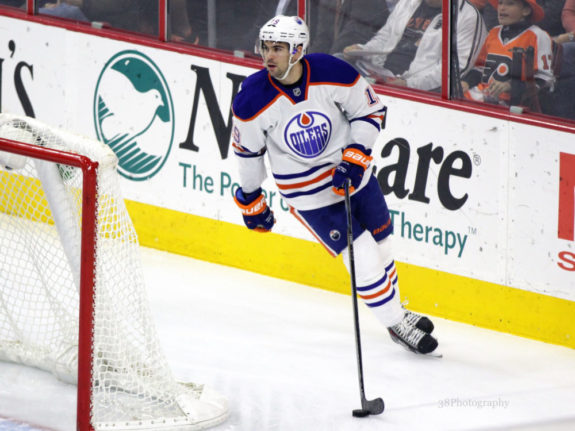
With his typical offensive excellence, including a 50-point season, Schultz also provided incredibly improved defensive play in a couple of seasons with a plus-27 rating in 2016-17 and plus-22 in 2017-18. Although there was a significant drop-off in his play in 2019-20, Schultz was clearly undervalued by the Edmonton fanbase and, more importantly, by Chiarelli who received just a third-round pick (Filip Berglund) in return.
5. The Ryan Strome Trade for Ryan Spooner
A derivative of the to-be-discussed Eberle trade was the Ryan Strome trade for Ryan Spooner (which was nearly as bad as the Eberle trade itself). Strome was substantially mismanaged in Edmonton and was not given the opportunities he should have received, unlike the New York Rangers following this trade. This trade is high on this list not due to the production they lost from Strome, but more due to what they gave up on in him and what they received in return.
Strome, after joining the Rangers, became a key proponent of their rebuild and posted an exceptional 59-point season in 70 games in 2019-20. Spooner, on the other hand, was a bottom-six forward who had a couple of promising seasons with the Bruins a few years prior.
His tenure in Edmonton turned out to be quite disastrous, as Spooner supplied three points in 25 games and lackluster defensive play before being sent to the minors and traded to the Canucks. This trade exemplified Chiarelli’s propensity to perform damage control and complete panicked transactions during seasons in Edmonton.
4. The Jordan Eberle Trade for Ryan Strome
The precursor to the Strome for Spooner trade was the Eberle trade, which involved Chiarelli trading the Oilers’ best remaining winger for a player, who at that point in his career, was a still-developing third-line winger and center. Eberle had just provided a 20-goal, 51-point output, and although the rumors regarding the trade had been swirling, the minimal return (at that point) of Strome was not expected.
Despite Eberle’s production dipping slightly prior to the trade, he was still consistently providing solid offensive production, while Strome’s career-high in points up until that juncture was 50 with the New York Islanders. To further exacerbate the negative impacts of the trade, as discussed previously, Chiarelli failed to provide replacement wingers with production even similar to Eberle’s over the years and the Oilers coaching staff and management failed to properly utilize Strome in their system.
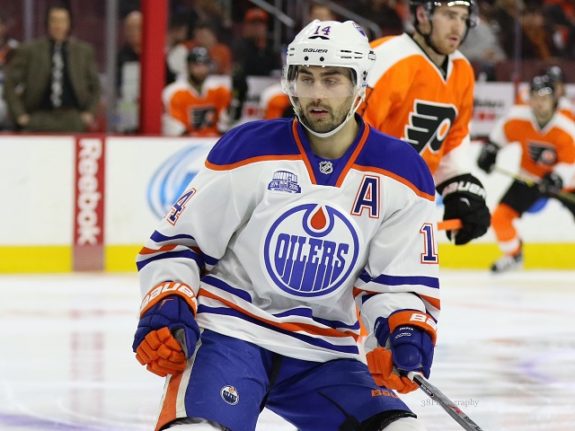
Moreover, Eberle achieved major success on Long Island with multiple seasons involving dependable play in both ends of the ice and a critical impact in two different Islander playoff runs.
3. Milan Lucic’s Contract
I believe one can make a legitimate argument that Milan Lucic’s contract belongs at the top of this list due to the idea that it was a significant catalyst for a majority of the moves previously discussed.
If not for Lucic’s outrageous seven-year, $42 million contract ($6 million per season), which expired after the 2022-23 season, the Oilers may have been able to hold on to a number of the players they dealt and the enormous cap hit could have solved numerous problems involved with the Oilers over the past couple of seasons.
After Lucic’s 50-point campaign in 2016-17, the first year of the contract, Lucic struggled to adapt to the way the game is played currently, as he has clearly been passed by and lacks the athleticism and speed to maintain a position as a top-six forward. Lucic was traded for James Neal who was in a similar situation to himself (with a similar contract), although he provided more of an impact than Lucic had in his final season with Edmonton.
2. The Griffin Reinhart Trade for a 2015 First and Second Rounder
A trade that is not as well-known among the average NHL fan but is all too familiar to individuals following the Oilers is Chiarelli’s trade of a 2015 first and second-rounder to the Islanders for Griffin Reinhart. The first-round pick involved with the trade turned into Mathew Barzal, a two-time All-Star, former rookie of the year, and one of the best centers in the NHL. The second-round pick was Mitchell Stephens who became a promising young prospect for the Tampa Bay Lightning.
On the other side of the spectrum, Reinhart played 37 career games and had two assists. The 2015 Draft was one of the deeper drafts in recent history and, although there is a strong possibility that the Oilers would not have selected Barzal, some of the other players drafted around their 16th pick were Thomas Chabot, Kyle Connor, Brock Boeser, and Travis Konecny. Even in the second round, Travis Dermott, Sebastian Aho, and Brandon Carlo directly preceded the Stephens pick.
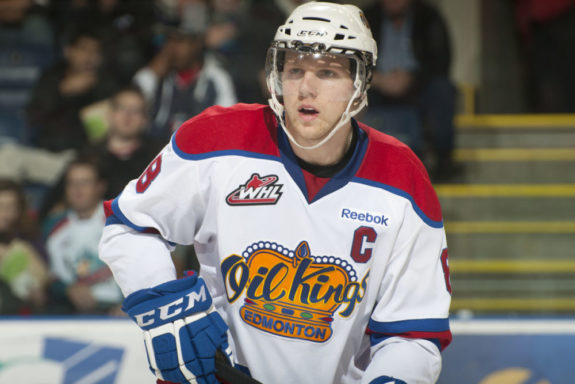
To have such an extensive list of successful players taken in this draft is astounding, yet Chiarelli and the Oilers front office decided to give up two of their three picks in the first two rounds to acquire one of the bigger busts in recent NHL draft history, instead of drafting players who could immensely help McDavid who was taken in that same draft.
1. Taylor Hall for Adam Larsson
Arguably the worst trade in Oilers history, Chiarelli traded a future MVP near the prime of his career for a borderline second-pairing defenseman in Adam Larsson. This article has relayed the ineptitude of wingers alongside McDavid and Draisaitl, so the frustration pertaining to this trade is even further amplified.
Removing Larsson from the Oilers resulted in a marginal difference over another replacement-level defenseman, while the addition of Taylor Hall alongside McDavid or Draisaitl on recent Oilers squads would have been something to salivate about. At seven years and $42 million, the Hall contract was very manageable at the time and in the latter years of the contract would have been viewed as an absolute steal to obtain a Hart Trophy winner younger than 28 at $6 million annually.
Of course, an MVP for Hall was not foreseen by many, but a player of his caliber should have easily commanded more than what the Oilers received in exchange. He still had four years left in his deal and continued to put up very good statistics.
Related: Best & Worst Oilers of the Decade
In terms of the Oilers, Larsson played primarily on the second pairing as an average defensive defenseman in his role, although he was a minus-28 in 2018-19. He never scored more than four goals in a season with Edmonton, was plagued by injuries in 2019-20, and had a $4.2 million cap hit. The Seattle Kraken selected him in the expansion draft. This trade remains just as shocking currently as it did when it first occurred.
Final Thoughts on the List
Based on this list, the disdain for Chiarelli and Oilers management by Edmonton fans during his tenure is quite understandable. His arrival to the Oilers actually came with much fanfare, as he had built a perennial contender and Stanley Cup champion with the Bruins for years. However, current GM Ken Holland is attempting to salvage and recover the Oilers from the problems generated by the previous regime.
